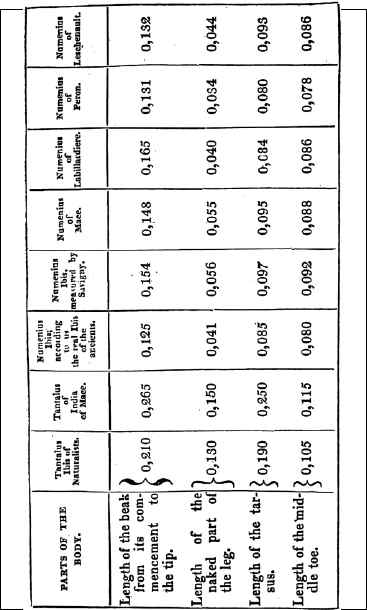 |
they differ in no respect from those of the paintings of
Herculaneum.
 A sardonyx in the collection of Dr. Mead, copied by A sardonyx in the collection of Dr. Mead, copied by
Shaw, App pl. 5, and representing an ibis, seems to be
the miniature of the bird we have described.
 A medal of Adrian in large bronze, represented in A medal of Adrian in large bronze, represented in
the Farnesian Museum, vol. vi. pl. 28, fig. 6, and
another of the same emperor, in silver, represented in
vol. iii. pl. 6, fig. 9, give us figures of the ibis,
which, in spite of their smallness, are very similar to
our birds.
 As to the figures of the ibis engraved on the plinth As to the figures of the ibis engraved on the plinth
of the statue of the Nile, at Belvedere,and on the copy
of it in the garden of the Tuileries, they are not
sufficiently finished to serve as proofs; but amongst
the hieroglyphics, of which the Institute of Egypt has
caused impressions to be taken on the spot, there are
many which decidedly represent our bird. We give one
of these impressions communicated by M. Geoffroy.
(Fig. 9.)
 We particularly insist on this latter figure, because We particularly insist on this latter figure, because
it is the most fully authehticated of all; having been
made at the time and on the spotwhere the ibis was
worshipped, and being contemporaneous with its
mummies; whilst those we have above cited, done in
Italy, and by artists who did not profess the Egyptian
worship may not be so accurate.
 We owe Bruce the justice of saying, that he detected We owe Bruce the justice of saying, that he detected
the bird which he has described under the name of
abouhannes, as the real ibis. He expressly says, that
this bird appeared to him to resemble that which the
mummy pitchers contained; he also says, that this
abouhannes, or  Father John, is well known and Father John, is well known and
common on the banks of the Nile, whilst he never saw
there the bird represented by Buffon, under the name
of the white ibis of Egypt.
|


 1-10
11-20
21-30
31-40
41-50
51-60
61-70
71-80
81-90
91-100
101-110
111-120
121-130
131-140
141-150
151-160
161-170
171-180
181-190
191-200
201-210
211-220
221-230
231-240
241-250
251-260
1-10
11-20
21-30
31-40
41-50
51-60
61-70
71-80
81-90
91-100
101-110
111-120
121-130
131-140
141-150
151-160
161-170
171-180
181-190
191-200
201-210
211-220
221-230
231-240
241-250
251-260


![[made with GoClick]](imgs/goclick.gif)